Z: The Final Countdown Read online
Page 9
Riley was impressed with the intelligence and the professionalism of Lindsay’s briefing. It more than made up for the lack in the briefback at Bragg. The AOB had certainly done its homework.
Lindsay wrapped up the order. “You load in sixty minutes. Depart at zero five twenty local time. It’s under eighty miles to the furthest insertion point. Both your teams will be on the ground before daylight. Your commo men need to link up with my AOB commo chief and get all frequencies and call signs. Questions?”
There were none, and the teams split out to prepare. Riley followed Captain Dorrick out and grabbed him. “Sir, which split team do you want us to go with?”
“I don’t want you to go with either,” Dorrick said irritably. “But if I have to, which I’ve been ordered to, then you go with the bridge team. I’m sending it in light. The airfield team has more likelihood of contact, so there won’t be room on that bird. Get with Sergeant Lome. He’s taking the bridge element.”
Namibia-Angola Border, 14 June
General Nystroom watched through a night vision telescope as the first scouts moved out, slipping across the border. They were part of two units: No. 32 Battalion, which was manned by native Angolans recruited by the South Africans during their long-running war in the area; and the Reconnaissance Commandos, the elite of the South African army. Many of the men walking out into the darkness had been here before, but fighting each other.
The scouts carried four days of food and water along with heavy loads of ammunition. Also, they carried the laser designators that they’d spent the last month training on. This was the most critical part of the entire plan, in Nystroom’s opinion. He wasn’t as confident as the American air force general who’d briefed the PAF staff three weeks ago in Silvermine. Nystroom looked back over his shoulder. An armored antitank gun was parked near his command vehicle. If the next forty-eight hours didn’t go as the American general had promised, there was going to be quite a lot of work for that gun.
Fort Bragg/Fayetteville, North Carolina, 14 June
In quarters and houses across Fort Bragg and Fayetteville phones began ringing. There was no surprise with this alert—they had all known they would be going sometime soon—and very little irritation at the timing of it. For some strange reason, practically every alert, real or practice, called by the army comes in the middle of the night and the soldiers of the 82d Airborne Division and the 18th Airborne Corps were used to alerts. At least this one was early enough that most weren’t even in bed yet.
The major difference about this one, though, was that they all knew it was the real thing. They had been training up for Angola for two months now, ever since the president had announced support of the proposed peacekeeping mission. So this time, the good-byes were longer and harder, and spouses woke children up and put them in the car to drive onto the post and watch their other parent walk away into the darkness. And in the back of everyone’s mind was the question if everyone who left was going to come back alive.
Cacolo, Angola, 14 June
Conner ran a hand across the green markings on her face that Riley had just rubbed on using a small tube. “This isn’t going to come off easy, is it?”
“No, it isn’t,” Riley said, now checking the combat harness she had put on earlier. “Most soldiers use bug juice to get the camo to go on easy but that defeats the purpose, which is not, as you would think, to turn your face green. It’s to remove the shininess of your skin so you won’t be spotted as easily. Jump.”
“What?”
“Jump up and down.”
Conner followed his instructions and Riley tightened down a flap on the vest. “All right. Again.”
She jumped and this time made no noise. Riley stepped back and carefully inspected both Conner and Seeger. He glanced at Master Sergeant Lome, who’d looked as if he were being asked to jump into shark-infested waters covered in blood when Riley had informed him that they were going with him. “Okay,” the senior NCO said reluctantly. “Let’s load.”
Riley trailed as they ran out to the Black Hawk. Besides Lome, this recon element consisted of Comsky as medic, Pace on the radio, and the junior engineer, Sergeant Tiller, carrying a laser designator. Sergeant Ku was their indigenous representative and appeared quite confused.
Riley pushed in next to Conner, while Seeger began doing his job. The camera he was using was specially fitted with a night vision adapter over the normal aperture. The recording would be very similar to what everyone else on the bird was seeing as they pulled up their night vision goggles and turned them on—everything brightly lit in a green haze.
Riley leaned over and helped Conner adjust her goggles. “Can you see?” he asked, yelling to be heard over the whine of the turbine engines starting.
“Yes.” Conner’s head was turning about as she got used to the new view of the world.
“You might have problems with depth perception,” Riley advised. “Be careful when you get off the helicopter.”
The wheels of the helicopter parted company with the ground and they gained altitude quickly. The aircraft was blacked out and the pilots were wearing their own goggles and using the cutting-edge technology of the aircraft cockpit to guide them to their destination.
“Remember,” Riley yelled, “first time we touch down, don’t get off. That’s the false insertion. We get off on the second one.”
“Second one. Got it.”
Riley grabbed Seeger and reminded him one more time. He’d seen anxious soldiers jump off at false insertion points, which made for a bad scene as the chopper had to come back and get them. The point of the false insertions was to keep any enemy who might hear the helicopters from getting a fix on the landing zone that the team would use by repeating landing signatures throughout the area.
Conner’s head was still darting about, the snout of her goggles looking this way and that. It was more than just getting oriented. Riley placed a hand on her forearm. “Yeah, it’s real. We’ll be all right.”
He’d been with Conner in Antarctica where they’d been shot at, but that had been thrust upon them. Here they were deliberately going out and seeking danger. Riley always found the time before actually being in action the worst. If not dealt with, the anticipation of the unknown could incapacitate a person. In his experience, people tended to fall into two categories when faced with crisis. There were those who did what they had to do, shutting down their emotions for the duration; and there were those who panicked, overwhelmed by emotion, who shut down their ability to think and function. From what he had seen of Conner in Antarctica, Riley had no doubt that she was one of the former. The other people on the helicopter—well, he trusted Comsky, but beyond that, any person who had not been in combat was a question mark. Riley had seen men with all the proper training and little badges on their uniforms freeze when the time came to get the job done. He didn’t blame them, but he didn’t want to be around them either.
They were flying low, against the possibility of going over a rebel force armed with surface-to-air missiles. Coming in from Luanda they’d flown high, out of range, but now, since they had to land somewhat surreptitiously, they were staying down on the deck and hopefully would be past anyone armed with a SAM before they had a chance to get a lock and fire. Whizzing along at twenty feet above the terrain in the pitch black at a hundred and ten miles an hour was a sensation that Riley knew Conner had never experienced.
“Five minutes to the first false insertion,” Riley yelled in her ear.
The helicopter swooped down into a creek bed, trees on either side appearing dangerously close to the blades overhead, in Conner’s opinion. She looked around the inside of the bird. Riley and Lome were doing the same thing—looking at a map and staying oriented to the terrain below. A crewman sat in each forward window manning an M-60 machine gun, the muzzle traversing the terrain on either side. The pilots were two large helmeted heads in the front, silhouetted by the dim glow of their instrument panels. Sergeant Ku was directly across from Conner. He w
as the only one who didn’t have goggles on and his eyes were wide open.
“All right,” Riley yelled as the helicopter slowed. “Stay on.”
They lifted up over the trees lining the creek to the open land on the south side and settled down, wheels briefly touching. Conner counted to three, then the bird lifted again, back over the trees into the creek bed. From what she remembered, the bridge they were to target was across this very same creek.
“Thirty seconds,” Riley said. He unbuckled her seat belt.
They rose out of the creek bed, this time to the north. Open land appeared and then they were down. Riley had a hand on her shoulder and he was pulling her. She stumbled as she felt her feet touch ground but Riley’s hand kept her moving. She followed his lead as he ran out away from the bird and then pulled her to the ground.
She heard the engines increase power and felt the downwash as the helicopter lifted and flew away. The sound diminished to the south and west until there was only silence. It was extremely unnerving. Conner felt totally exposed and naked.
Riley tapped her and tugged up. She got to her feet and fell in behind him. The five soldiers formed a triangle and moved downslope toward the creek, Riley, Conner, and Seeger in the middle of the triangle.
Abraham Lincoln Task Force, 14 June
“Questions?”
The pilots gathered in the ready room were just that—ready to go—and there were no questions. They were, in pilot jargon, “in the zone”—minds already in the cockpit and flying. They filed out, maps tucked under their arms. Their boots rang out on the metal ladders as they went up to the flight deck where their jets waited: sleek F-14 Tomcats and F-18 Hornets with missiles loaded under the wings, along with stubby A-6E Intruders with bomb racks bulging with more firepower than the largest bomber ever carried in World War II. They all waited for their riders.
The massive ship was already turning into the wind as the pilots and crew boarded their jets and strapped themselves in. With a roar of steam, the catapult vaulted the first aircraft into the air. The next was immediately wheeled into place.
Oshakati, Namibia, 14 June
The lead A-10 “Warthog” taxied to the end of the runway and paused as a string of similar aircraft waited in line behind it. The official air force designation for the A-10 was the Thunderbolt II, after the famous P-47 Thunderbolt of World War II. Pilots, of course, were not known for following the official line and shortly after entering service, the A-10 was affectionately being called the Warthog by those who flew and those who didn’t.
The majority of air force pilots detested the plane and stayed as far away from it as possible. It was ugly and it was slow and its mission was dirty: close air support of ground forces. No racing through the sky at Mach 2 and engaging in aerial gunfights. The A-10 was not what jet jocks dreamed of.
Those who flew the Hog loved it because it was built to fly low to the ground, carry a tremendous amount of bullets and bombs, and designed to survive an incredible amount of damage. A-10 pilots were the air force’s version of paratroopers.
The plane was practically designed around its gun system—a 30mm Gatling gun whose multibarreled snout stuck out underneath the nose of the plane. Firing at either 2,100 or 4,200 rounds per minute, the A-10 could put out a tremendous number of milk-bottle-sized bullets in a hurry. The wings could handle an amazing variety of ordnance, from bombs to air-to-air missiles.
These A-10s had a mixture of laser-guided “smart” bombs on the wings and cluster bombs, designed for ground targets. A few, with special missions against the MPLA airfields, had “runway busters” loaded.
On an adjacent runway, a different line of planes queued up. South African Impala II, Liberian F-4 Phantoms, Egyptian-owned Soviet-made MIGs—the aircraft of the PAF prepared to do their missions in the southern half of the country.
Forty-five thousand feet, more than eight miles, above Oshakati, a Boeing E-3C Sentry AWACS—airborne warning and control system platform—picked up the lead A-10 and South African Impala as they launched. From the west, the crewmen in the back had the strike squadrons from the Abraham Lincoln as a series of small triangles over a blank sea.
The officer in charge (OIC) of the management station, Col. Tom Harris, knew the AWACS had the capability to provide flight and strike control for five times as many planes as were in the sky. Most of his crew were veterans of the Gulf War and nothing could compare to the first night of the air war there, when over a thousand airplanes and helicopters had been in the sky at the same time. Compared to that, the present action was a cakewalk, though he wasn’t going to allow his crew to be slack.
The colonel spoke into the boom mike that hung in front of his lips. “Any signatures?” He could talk to all crew members on intercom and, with the right call sign, with any of the one hundred and twelve war jets and helicopters in the air below. They had native-language speakers on board for those craft that didn’t have English speakers as pilots.
“Skies clean. Luanda International is shut down also.” There were no radars on in the entire country of Angola, as usual at this time of the morning. There was no way the rebels could know the sky was going to spit thunder and lightning in less than an hour.
Vicinity Saurimo, Angola, 14 June
Lome held up his hand palm out. The team halted while the sergeant crawled forward with Ku. They were back in less than five minutes. “Bridge is just ahead,” Lome whispered. “One guard. There’s a hut on the south side.”
“Can we get a shot?” Conner quietly asked.
Lome bit his lip and looked at Riley as he thought. “All right. But you make sure they keep it quiet and stay down from Tiller and the laser,” Lome said.
Riley nodded. He felt for Lome. Riley had been both a team sergeant and a team leader in his time in Special Forces, and he could well imagine Lome’s concerns: Number one would be the safety of his men. Second would come mission accomplishment. Lome had been ordered to allow Conner and her man to do their job, but if that came close to violating concern one or two—well, Riley had also been in that situation and he knew what would happen.
“Let’s go,” he said to Conner. He pressed Seeger and her down to the ground and they low-crawled up along the north side of the streambed, behind Lome and Tiller, who had the laser designator. Comsky and Pace were following, manning the radio and providing rear security.
Lome halted and Tiller climbed farther up the bank and looked over where the stream turned to the south. Riley indicated for Conner to stay still and nudged Seeger farther along in the water, which was up to their chests. Just below Tiller, the large roots of a tree extended out of the bank and dipped into the water. Seeger rested his camera on top of a root and zoomed in on the bridge.
It was sixty feet long, double wide, concrete with multiple supports. A tough target for a man with a backpack of demo, Riley knew—contrary to what is shown in movies. But for a man with a laser designator, a satellite radio, and the resources of the U.S. air force and navy at his beck and call, not a tough target at all.
A lone guard stood smoking a cigarette at the south end. A shack, probably holding other guards, was next to the road there.
Comsky keyed the SATCOM radio. “Sierra Romeo Three Four, this is Sierra Romeo One One. Over.”
Eight miles up and five hundred miles to the south, Comsky’s call was picked up and redirected by the crew on board the AWACS. At a bank of radios and computers, officers and NCOs linked up ground teams with their planes in an intricately coordinated dance of man and machine.
“Uh, One One, this is your Three Four. Go ahead. Over.” The attention of the bombardier-navigator in the lead of two A-6 Intruders was totally inside his small world, watching information scroll up on his computer screen.
“This is One One. We’re on target and waiting for the train. Over.”
The officer smiled. He didn’t understand ground pounders. Why would they want to be down there in the dirt and mud when they could fly high and safe and go ba
ck to a hot meal and warm bed at the end of every mission? His squadron of A-6s was the last one still on active duty. The plane was being phased out, and this action over Angola was most likely going to be its last mission. They all wanted to go out with the same proud record the plane had earned over the past several decades in numerous other conflicts.
“Roger, One One. We’ll be pulling into station in”—he checked his display—“at my mark, one minute and twenty seconds. Over.”
On the ground, Comsky keyed his FM radio and spoke into his teammates’ ears. “Fast movers are one minute out. Light it up.”
Tiller turned on the laser designator and the invisible beam of light touched the center span of the bridge.
“Three Four, your station is lit. Over.”
The bombardier-navigator was doing several things at once. “Roger. I’m searching.” He armed the outermost pair of air-to-ground smart bombs on the plane’s wings, gave the pilot an update on course, and, with the forward-looking radar, continued to scan the ground ahead for the laser. A bright light appeared in the center of his screen. Right on. “I’ve got you, One One. Twenty seconds. Over.” He ensured the bombs had the same acquisition on the laser, then flipped up his firing switch.
The wings of the Intruder lit up and the two bombs were gone. “Away and tracking good. On to secondary target. Thanks, One One. Out.” The pair of Intruders turned away, leaving the missiles to finish the job.
Riley twisted his head and watched the two streaks of lightning come out of the sky. Both bombs hit and the bridge disappeared in a globe of flame. Chunks of concrete and twisted steel flew through the sky, somewhere among that a little bit of flesh and blood from the unfortunate guard.
“Dear Lord!” Seeger exclaimed, keeping the camera steady.

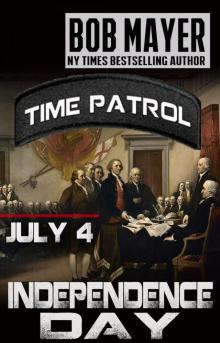 Independence Day
Independence Day Invasion
Invasion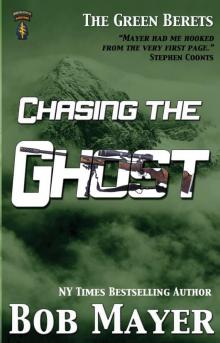 Chasing the Ghost
Chasing the Ghost Hallows Eve
Hallows Eve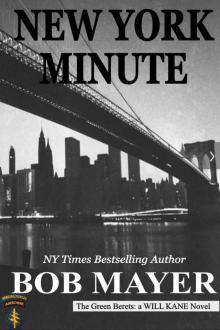 New York Minute
New York Minute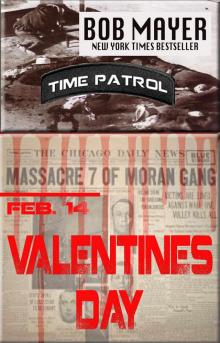 Valentines Day
Valentines Day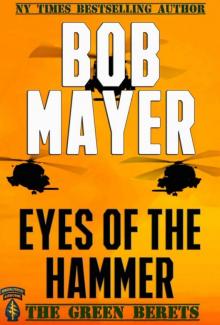 Eyes of the Hammer
Eyes of the Hammer Walk on the Wild Side
Walk on the Wild Side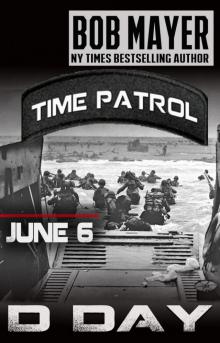 D-Day
D-Day Lawyers, Guns and Money
Lawyers, Guns and Money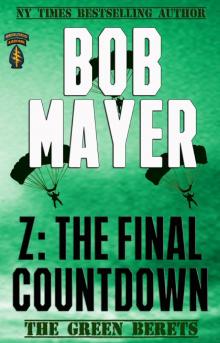 Z: The Final Countdown
Z: The Final Countdown Redemption: Area 51, #10
Redemption: Area 51, #10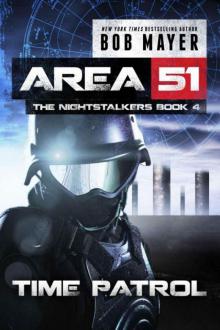 Time Patrol
Time Patrol Interstellar
Interstellar Sumter to Shiloh
Sumter to Shiloh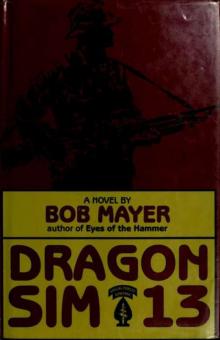 Dragon Sim-13
Dragon Sim-13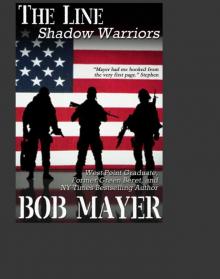 The Line
The Line Omega Missile (Shadow Warriors)
Omega Missile (Shadow Warriors)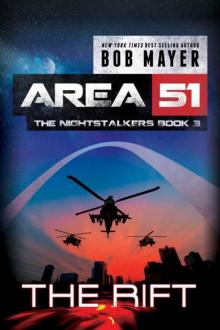 The Rift
The Rift The Jefferson Allegiance
The Jefferson Allegiance Project Aura
Project Aura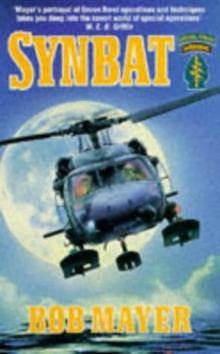 Synbat
Synbat Ides of March (Time Patrol)
Ides of March (Time Patrol)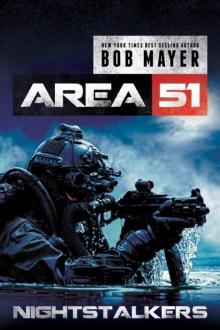 Nightstalkers a5-10
Nightstalkers a5-10 Lost Girls tc-2
Lost Girls tc-2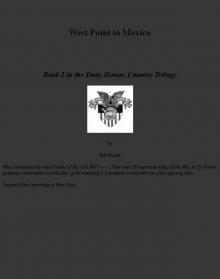 West Point to Mexico
West Point to Mexico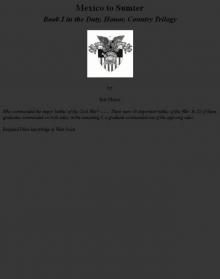 Mexico to Sumter
Mexico to Sumter Area 51_Invasion
Area 51_Invasion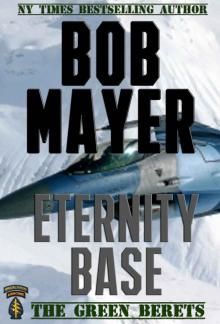 Eternity Base
Eternity Base The Line bo-2
The Line bo-2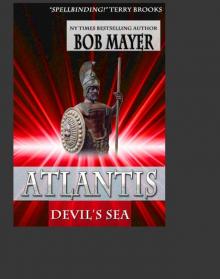 Atlantis Gate
Atlantis Gate I, Judas
I, Judas Area 51_Redemption
Area 51_Redemption Bodyguard of Lies
Bodyguard of Lies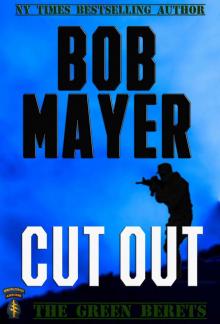 Cut Out
Cut Out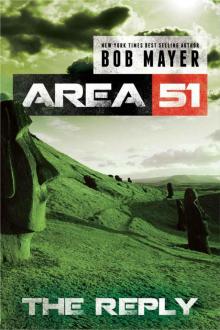 The Reply (Area 51 Series Book 2)
The Reply (Area 51 Series Book 2)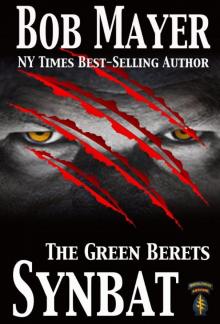 Synbat tgb-3
Synbat tgb-3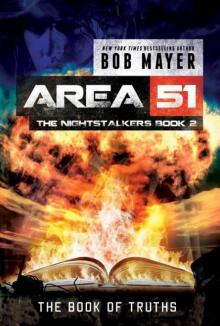 The Book of Truths a5tn-2
The Book of Truths a5tn-2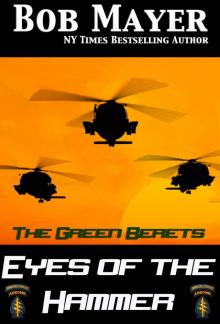 Eyes of the Hammer (The Green Beret Series)
Eyes of the Hammer (The Green Beret Series)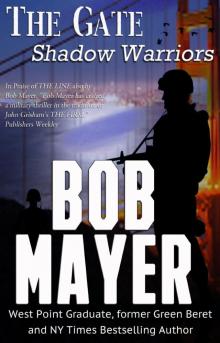 The Gate
The Gate The Gate bo-1
The Gate bo-1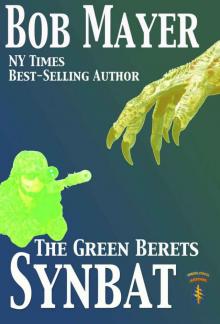 Synbat v5
Synbat v5 Omega Sanction
Omega Sanction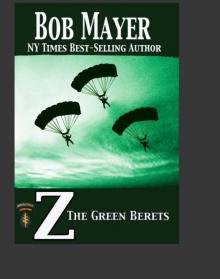 Z
Z Chasing the Son
Chasing the Son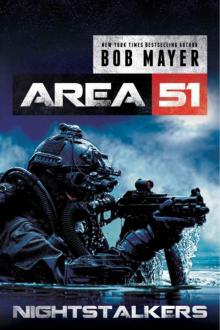 Nightstalkers
Nightstalkers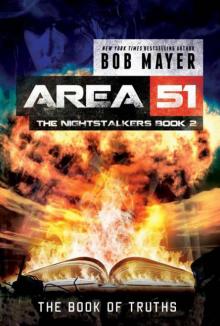 The Book of Truths
The Book of Truths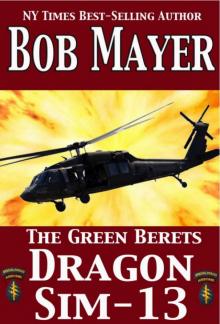 Dragon Sim-13 tgb-2
Dragon Sim-13 tgb-2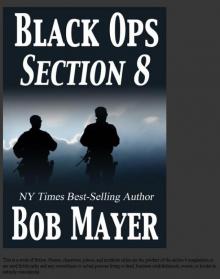 Section 8
Section 8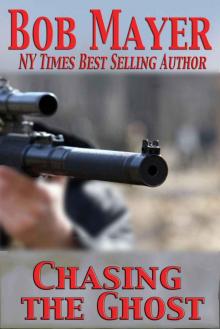 Chasing the Ghost v5
Chasing the Ghost v5 Psychic Warrior
Psychic Warrior Chasing the Lost
Chasing the Lost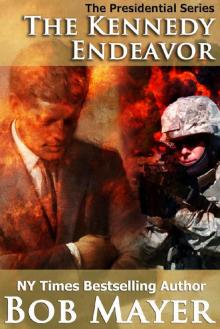 The Kennedy Endeavor (Presidential Series Book 2)
The Kennedy Endeavor (Presidential Series Book 2)